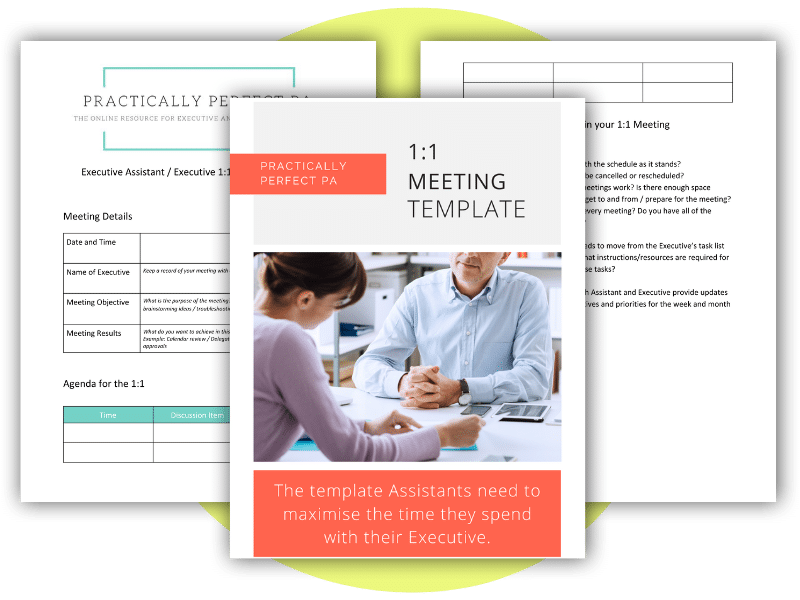How to ensure your admin improvement projects stick!
How often are we asked to improve administrative processes without any real guidance on what to do or where to start?
Most managers will hire professional consultants for business improvement projects but ask their Assistants to change the fundamental administrative structures without instruction or training. Even if we make significant changes to useless admin procedures, how do we ensure our colleagues do what we ask them? How to ensure your admin improvement projects stick!
This has happened to me many times as an Executive Assistant! However, I was lucky enough to work with consultants trained in Lean and Six Sigma methodologies for business improvement projects. I learned some of the tools they used, which have been invaluable.
One such tool is DMAIC which stands for
Define
Measure
Analyse
Improve
Control
I’ve found this tool useful when solving problems with admin processes. I used it successfully when asked to reduce the money my company spent on hotel accommodation. The DMAIC process makes you work through specific activities in a defined structure so that any changes you make to a process will be successful. Sounds good, right? Well, let’s have a look at each stage in a bit more detail.
How to improve administrative processes
Define:
The purpose of the first stage of the DMAIC process is to define what the project is. This includes:
- a short description of the project
- why the improvement needs to be made / some background on the problem
- what is in the scope of the project and what is not
- the project goals
- the benefits of improving the process
- who is involved in the project and who are the key stakeholders
Within the define phase, Assistants should also look at setting up a delivery plan and agree with their managers on how success will be measured. During my hotel accommodation project, I used the define phase to focus solely on hotel accommodation and not travel costs or any other expenses related to my department. I also wrote a project charter which helped me stay focused during the project. Let’s move on to the next phase to show you how to ensure your admin improvement projects stick!
Measure:
This part of the process is all about data gathering to ensure that the improvements are successful and not just a quick fix. To change any admin process, we need to understand why the current process is not working before improving it. The measurement phase includes:
- observing what already happens
- gathering any data to help form an opinion on the process
- speaking to others and gaining their view
- mapping the process in more depth
- understanding what needs to be improved and what will make a real difference
When I was asked to look at how we can reduce the cost of hotel accommodation in my department, I used the measure stage of the project to interview everyone whether or not they booked accommodation and asked a series of questions regarding the process. This gave me some excellent data on why the hotels were costing so much, and the methods people used to book them.
Analyse:
The purpose of the analyse phase is to make sense of all of the information and data collected in the previous stage of the process (measure) and confirm the problem’s source. Here are some questions you should be asking yourself during this phase of the project:
- What are the root causes of the problem?
- Where should we focus our efforts on making the improvements?
- Have all the problems been uncovered?
During the analyse phase of my project, I also prioritised the problems I had uncovered to make improvements quickly during the next stage of the project.
Improve:
This is the fun part of the project and where you actually start to make the changes necessary to improve the process. At this point, improvements can take place, tested and implemented. During this stage of my hotel project, I held several brainstorming sessions to identify a range of possible solutions and review existing processes that might help improve the hotel booking system. We were using an external provider for our flights but not our hotels. The improvement phase is great because it ensures that:
- the team does not get stuck with the same old solutions
- there are new solutions that have been thoroughly researched and relate to real problems
- piloting of the solutions can take place before a final process is implemented.
To reduce the costs of our hotel expenditure, I asked everyone to book accommodation through one supplier. The supplier I chose gave us a preferred rate based on the number of rooms we used each week. The accommodation was near to the office, comfortable, clean and secure, which were additional requirements I had uncovered during the measure phase. In the end, I reduced hotel costs by 40%.
Control:
The final phase of the DMAIC process is there to make sure that any improvements will last. So, unfortunately, this means that the new process should be documented, and communications should be to those affected by the changes you have made. In my example, during this stage, I produced a small card that my colleagues could keep on their desk to remind them of the new procedure for booking hotel accommodation. The control phase will also help you to make sure:
- there is no backsliding into old habits
- you can react to any future problems
- you can share the learning with other departments in your company
Although the DMAIC approach to business improvement is a long process, it is brilliant at ensuring the changes you make to the administration in the company are well thought through and last. Each phase can be worked through fairly quickly and can be used from small requests to real departmental change. This is how to ensure your admin improvement projects stick!





